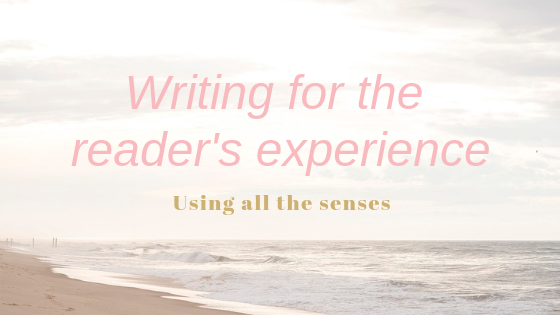If you ask someone to describe their favourite holiday destination they’ll likely tell you about the weather, general scenery, fun activities to do there, their favourite things to eat, etc. When you’re a writer describing a scene though, you need to crank up your senses to a superhero level and really absorb and detail the environment so that the reader can feel and imagine the location. The next time you’re travelling, even if it’s just to work one morning, pay attention to your surroundings and think about how you would tackle it as a writer.
I recently travelled to Hawaii, one of my favourite destinations, and I looked at it from the perspective of a writer, not just a tourist as I have been many times before. And, boy, did I feel and breathe in the environment differently! Subtle things I’d just not really paid attention to before were so intriguing this time. My husband was with me and he took on the challenge to absorb the environment as a writer too, and he discovered something we’d just walked over time and time before. One section of Waikiki wasn’t just sandy, instead the top level that our feet crunched over was made up of crushed shells. He pointed out to me that every time the waves crashed into shore the shells would rattle and make a different sound to waves rolling on sand. That is a detail that, when included in a book, transports the reader and brings an authenticity to your work. It’s something I’m trying to work hard on as I go through the second draft of my novel.
It’s the subtle things that can bring greater depth to your book. Continuing with my beach theme, here are a few things that I’ve tried to work on and you might find useful too:
- How does the environment feel? A beach isn’t just sandy. Feel the grains below you. Is the sand coarse like crumbs or soft like powder? Is it so sunny your character’s shoulders are burning or is it cool and wind is whipping around her neck making her pull up the collar of her sweater?
- How does the environment look? We mostly all think of the sea as being blue, but how does the ocean look in front of you? Water can have different shades of green. It might even be crystal clear with hints of teal and shadowy patches of reef.
- Can you taste the environment or a local dish that adds a layer of character to the scene? Maybe the wind is whipping and salty sea spray is lashing at your characters lips? Perhaps they are eating fish and chips or drinking from a coconut that enhances the seaside experience.
- What can you hear where you are standing? An obvious beachside sound is the flock of seagulls but there might also be teenagers laughing while playing a ball game or a speaker blasting music. The ocean itself has a sound. Are the waves roaring in or are they just slowly rolling in making shells and pebbles rattle together?
- Does your location have a distinct smell? Perhaps the air has a smell or something nearby is contributing to the environment like the smell of an oily deep fryer from a kiosk or sunscreen and coconut oil from the sunbathers.
- Another sense I would consider ‘feeling’ is the vibe of the place. What do you want your reader to feel in their gut while they are reading this scene? Is the beach isolated and a little eerie, shadows casting from the bushland nearby? Or is the beach isolated because it’s dawn and your character is peaceful, perhaps doing yoga? If you (your character) visits a location in the early morning it will feel vastly different to when it is the middle of the day and more people are around or local businesses are open.
I know with my first draft I tried to inject some of this, but I felt I could do better. So, I have revisited the towns where my book takes place and absorbed the environment. I took photos and videos on my phone, and jotted down notes in my notepad. I guess this is where my natural noseyness comes in handy! Now, as I go through the second draft I am revisiting my notes and trying to inject more depth into the scenes.
The last thing I will add is a tip I learnt from one of my instructors, and to be honest it stresses me as I write because there’s already a lot to think about! The advice: Don’t just say the obvious or use a cliché description e.g. the sand was yellow or he had white teeth. Bland! Instead try to think of a more detailed way to say it e.g. she dug her toes into the speckled sand, damp from a recent wave.
Happy writing superheroes!
J x

